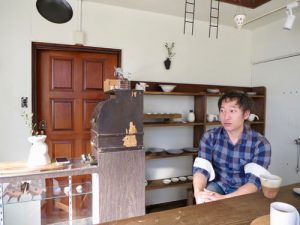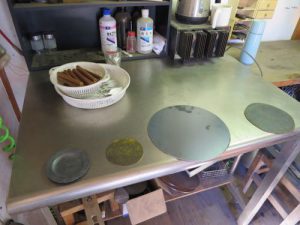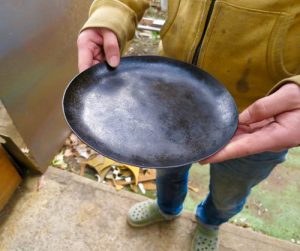Artist Interview with Norio Yuasa, Kijou Kougeisha
(part2 English)
2018.04.21
I had conducted an interview with Norio Yuasa, who has been making metalworks at a workshop in Funabashi, Chiba prefecture.
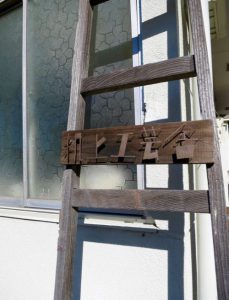
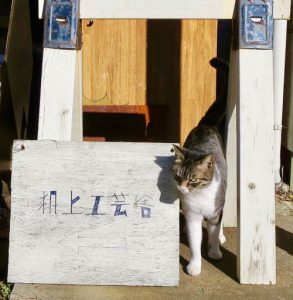
○What made you start getting interested in craft works?
I wasn’t interested in craft, but I liked metals since I was a child. Specially, I liked metallic luster.
○Did you have any experience that you made the basis for your metal works now?
I had never thought that I am going to be an artist when I was young, but I enjoyed art class at junior high school. My art teacher had a kind unique style of education and he gave a grade to my performance (quality), not for effort.
I also have another story. Before graduated from high school, I had a part time job to save money for traveling to Hokkaido, mainly and I did it by bicycle after graduated from high school. I had begun to think that I wanted to study metals at a college in the middle of a trip. One day, I dropped by a bookstore and I read an article about a man who made a small bicycle used brazen rods and made me think to study metals more often.

○Please tell me about lineup of your works.
I have been making cutlery from the beginning. I think the most familiar metal is cutlery for people. And I want my customers to put my cutlery in their daily life. But my cutlery didn’t sell as expected.
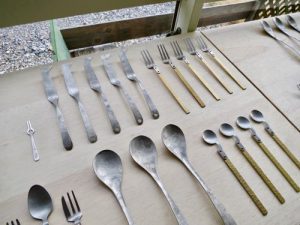
○What did you think that your cutlery didn’t sell as you expected?
I thought that the price didn’t fit (a little expensive) to users at that time but I didn’t worry much. Cutlery is one of the commonly used tool for us. So, there is no use making if people don’t use it. I researched and tried to reduce the cost. I had confidence that my cutlery was good quality and lower price in comparison to others but didn’t sell much. I think I was learning how difficult to making the “tools”.
○Could you tell me what made you start making a free palate (pan) after the cutlery?
Actually, I didn’t feel that I started to make something new, but I just thought a free plate/pan was also one of commonly use tool and easy to get into our daily life.
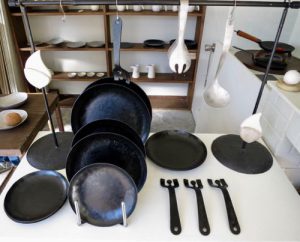
○You are also making various stainless plates. Do you want to make more variation of those plates?
Yes. I think metal plates can be given an accent on your table. So, I am consciously making those plates considering the size or shape.
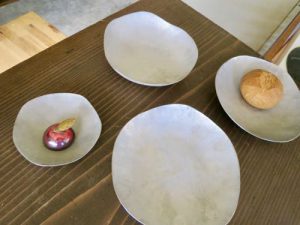
○What would you like to try with your work in the future?
I would make more stainless products. I want to contribute to making reasons for people who are resistant to use metalworks to come to like metal products.
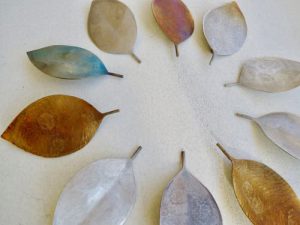
○Finally, what do you want people to think about your works?
I wish that my metal products to rise in value after someone bought my products. When someone bought my products is not “best” time for the products, but products improve with use. There is the meaning to become special for somebody, and there is also the meaning of a material becomes shiny and beautiful. I would be very happy if my customer uses my product often/ whatever they like, and it becomes valuable things for them. In a sense, I’m stealing the possibility of materials and making a thing. Thus, I strongly think “value” or “precious” to my works.
After the interview, he showed us how to make a metal plate with a sample at their workshop.
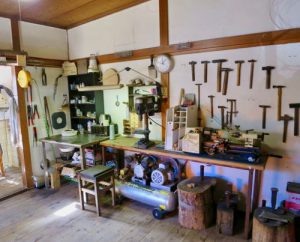
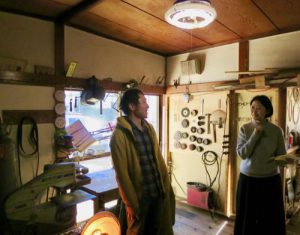
Cut round from the iron plate.
Forgings (method for producing metal product having fine crystallized) by hammer to giving them strength and making the shape.
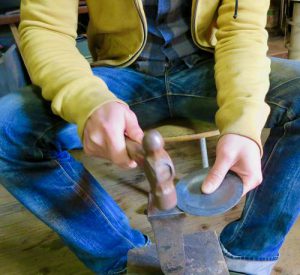
Surface treatment with a grinder

Quenching process (sample) using a small burner.
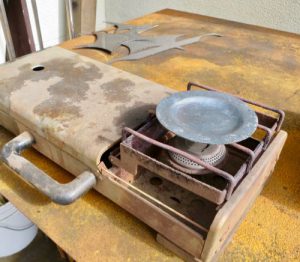
Heat a plate over medium-high heat until the smoke rises. Spreading vegetable oil such as the olive oil on the surface of the plate.

Heat again until the smoke rises.
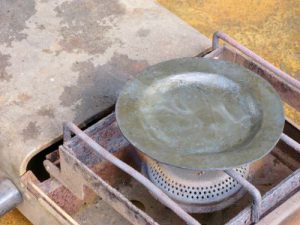
You can see the changing the color of the surface.
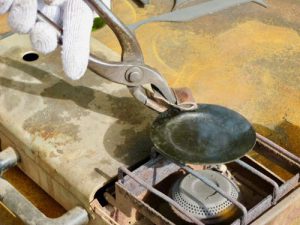
And repeat above process several times, you can find the familiar black color of pan…1.Seizure vegetable oil and 2. Oxidative polymerization…and 3. Oxidative polymerization the oil
Thank you very much, Yuasa san!
He will participate in Mashiko Pottery Fair start from April 28(Sat.) to May 6(Sun.).
